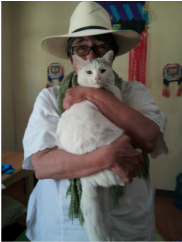George, the German biologist whose eco-lodge, ElPasado Del Cerro, was my first base in Petén, told me that large areas of the Petén rainforest were officially protected and managed by local indigenous communities. He thought I might
enjoy Uaxactún both because it was an early Mayan observatory and also because the community was working to develop sustainable enterprises as part of their protection of the surrounding jungle.
“So there’s a hotel there?” I asked George.
“It’s a little basic,” he said. “It’s owned by a woman who grew up in Uaxactún. Her brother is usually there too. She has a
surprisingly good museum as well.”
“Do I need to call and make a reservation?” I asked, afraid of being stranded without a place to sleep or a bus to leave on..
“I don’t think there will be many people there,” George said.
Uaxactún, the northernmost town in Guatemala,is 23 kilometers north of Tikal and the road goes through part of the
park. I was lucky because there was still one space left on the bus after two teenaged girls slid close, smiling shyly at me over the piled luggage. The bus driver’s assistant was so well dressed that at first I thought he was only a helpful passenger returning from work in the city. We were talking as the bus accelerated when the brakes first screeched of metal on metal. .
Neither he nor the other passengers exhibited any of the alarm I was feeling. Of course this didn’t mean anything. Firecrackers are always popping in Guatemala and I am the only one who ever flinches with the sound. After an hour the bus screeched one last long time and the bus came to a complete halt in the middle of what used to be the landing strip for airplanes from Wrigley’s Gum, who came to collect the chicle that workers harvested from the chicle trees in the jungle.
“Your hotel,”the assistant said, pointing up a slight hill to a sagging gate beyond some foraging horses.
Dusk is not the optimal time to arrive at basic accommodations in a pueblo devoid of other tourists. In the fading light the hotel looked ramshackle and deserted, the buildings slightly menacing in the half light. Antonio looked disarmingly like Norman Bates and uncomfortable scenes from the film "Psycho" played in the back of my mind, especially since his sister was nowhere in sight.
The room featured two single mattresses on wooden frames, one of the beds made up with sheets and a cover. The mattress was not plush, but it was not the rock hard mat of ticking. . On closer examination, the room was better than I feared.
Beneath the steep thatched roof, the ceiling had been well-screened and the door fit tight. “Keep the door closed to keep out the insects,”Antonio warned.The two nearby working bathrooms were clean and had toilet seats, which made them exceptional. Antonio told me there would be electricity for a couple hours a little later. I sprayed myself lavishly with Deet, though my fear of vicious mosquitos was generally unfounded, even though this town sat surrounded by Petén’s jungle. When the lights came on, a little boy turned on the TV at one end of the large dining room. The disturbingly large holes in the mosquito screen that I had noticed earlier were soon occupied by boys of various heights, each of them staring with rapt attention at the screen.
barely used clothing from the US arrive in Guatemala every week. Vendors at every local market sing, “bueno, bonito, barrato,” good, pretty, cheap.
“I’ve had a big project today,”Naria said, “I had to go to town.” I made sympathetic noises. “What do you want for dinner?” she asked. She did not give me a menu and I’m not sure a formal menu existed. After a moment she said, “how about eggs, beans, fried bananas and tortillas?”
I sat writing at the table when my hot food arrived, the tortillas steaming and tucked into their basket. “What would you like to drink? We have Coca, Fanta and Cerveza,” she said, emphasizing the last. “A cerveza” I said, taking the hint, at which Naria brightened and said, “Yes!” bringing a beer for herself and sitting down at the end of the table.” I bit into one of the tortillas and paused. It was the best tortilla I had ever tasted, full of the flavor of corn, moist and chewy. She explained that the old
women I had met in the kitchen, Nellie, grew the corn on her milpa. The salsa was also extraordinarily tasty, better than any I had had in Antigua, with the flavor of fresh tomatos and the perfect sharp bite of heat from the chiles.
We chatted for a while and then Naría said, “But Guatemala is so poor. Yet we have so much that the world admires. The history of the Mayans, the rainforest which the whole world depends on, the many fruits of our plants. We even gave the world chocolate -- which only the ancient Mayan royalty drank. What do the rich countries give us? Why is it this way, Luisa? Why are there these rich countries when we are so poor?”
The US has been one of Guatemala’s worst foes, displacing the Mayans from their land for the benefit of the United Frui company, mining interests, and corporations of oil and wood. The CIA overthrew Guatemala’s democratic government in 1954 and trained the military in atrocities during the brutal civil war, which raged from the 1970’s to its official end in 1996. As usual, I could not defend my government. “These big interests steal from the whole world and give back only guns,” I said.
I could see she wanted to believe that the rich countries are full of rich people. And in reality, our ability to amass debt has allowed us to live as if we own what we can’t pay for. “In my own country now, the banks take people’s houses, most people don’t have adequate health care, there are few jobs, the government spends almost nothing on schools and trillions of dollars
on war.”
Naría shook her head in disbelief. “But the rich,” she paused. “Have too much power,” I continued. She cleared my dishes and I divided the rest of my beer into our glasses.
“What do you think will happen in 2012?” I asked her, referring to the end of an important epoch in the Mayan calendar.
“That is the question,” Naría said, “and no one really knows. I want to think that Uaxactún will rise again. That the indigenous will not be poor but instead respected for our knowledge and our traditions.” I nodded in agreement. “I want the hills to
awaken and people to care more for the land.. . .What do you think for 2012?”
I said something I had not thought to say before. “That the guns will fail to function and the men will find it difficult to get
hard. That the women will sing andthe men will whisper.” She laughed and clasped my hand. We drank the last swallow of our beers.
“Now you must be ready to sleep.” Unfortunately it was only 8:00 and I was wide awake but I headed for my room. The
lights went out before I found my flashlight, so I groped in my bag in complete darkness and then shone my recovered flashlight under the beds looking for snakes and scorpions. There were none, the floor was spotless. I lay awake listening to a rustling which sounded like someone lurking outside my door. Eventually I realized it was only palm fronds scraping against the thatch.
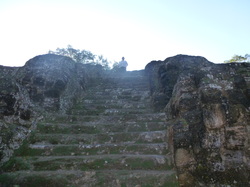
I hired Antonio to give me a tour of the ruins. Though we were to meet at 6:00, it was 7:00 before we walked across Wrigley’s dirt runway. Wrigley’s
has since synthesized most of their gum which is why gum now melts in your mouth instead of retaining its elasticity. There is still some demand for chicle and some of the men continue to be
chicleteros, but it is demanding work. Collecting chicle requires profound
knowledge of the jungle as the men are sometimes gone for 5 days, walking deep into the jungle to find untapped trees.
An inexperienced person could easily get totally lost or fall victim to a
deadly snake.
Wrigley’s runway is now used for playing soccer, flying kites and for walking from one side of town to the other. Antonio
told me that Uaxactún is composed of 157 families, or about 800 people. Only in the last ten years has Uaxactún been accessible by car. Though he and Naría were from Uaxactún, there were immigrants from other parts of Petén, Cobán and even Mexico living there.
Uaxactún has an interesting archeological history, dating from 500 BC. Like Tikal it was occupied until the 10thCentury AD. Once thought to be the earliest Mayan site, several more ancient sites have since been uncovered, though none of them match
Uaxactún’s fame in astronomy. Uaxactún was conquered by Tikal for over a hundred years but then regained autonomy after fighting off the conquerors. Tikal continues to dominate Uaxactún in terms of money for excavation and dollars from tourists.
On our way we passed a mare, her placenta still steaming on the ground, her colt wobbly kneed standing next to her.
Flocks of loros flew above us. At the park entrance, the kiosks for tourists were empty and decaying. Antonio and I were the
only ones in the ruins. As the morning fog began to thin, the ghostly shapes of the observatory complex seemed to step out of the mist before us, adding to the sense of being in another time..
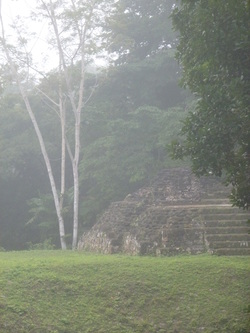
thousands of years before. Antonio waved towards the three monuments at a distance from where we sat. “This is the most accurate astronomical site of the Mayan world, here at Uaxactún,”he said. “The Mayan calendar was perfected and completed here. Every year on June 21, the sun rises directly over the indented part part of this monument to the left. On December 21, the sun rises directly over the indent on this monument to the right. And on the equinoxes, both fall and spring, the sun rises directly over the indentation on this middle
structure.” This morning the sun was filtering through the jungle on our right, towards the monument of the winter solstice. I pressed Antonio
about the dates of the solstices and equinoxes as I knew that the exact date of
these events varied slightly every year. But Antonio insisted that
the date was always the 21st,-- whether this came from his personal
experience or his training from the government tourist agency, I did not know.
But then he said something that stilled my questions.
“At each of these times, four times a year, the sun makes a path of light that strikes exactly the same point on this observatory where we are now sitting.” Here the mastery of the Mayans is overwhelming. How to plan and then achieve these massive stone structures so that the shifting balance of light and dark on the equinoxes and the solstices would make a triangle of light ending at exactly the same point? Antonio and I stopped talking and sat,pondering the path of light.
Back at El Chicletero, Antonio unlocked the museum and said I could spend as long as I wanted looking. To my astonishment, the room was full with nicely displayed plates and bowls and even skulls which had been found around the site. On the plates I could see the red and also some black and yellow, colors which had once decorated all of the buildings. I asked Naría how she came to have this collection. She said she started with some pieces she had found and then when she said she wanted to start a museum, other people in the community contributed pieces.
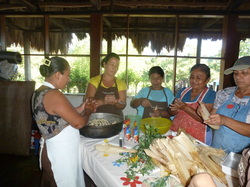
It was about 11:00 and I was wondering what I was going to do for the rest of the
day and if there was something besides eggs and tortillas to eat, when suddenly
two younger women and a couple men appeared in a pickup truck, hefting enormous ice chests and milk crates full of food into the dining room.
Perhaps I had underestimated the popularity of Uaxactún!
I questioned one of the young women. “I’m teaching a class in tipico Guatemalan cooking,” she said. When I asked who the students were she said, “Oh, they are the women here, in Uaxactún! It’s part of a project for community based tourism here. I came before and taught hygenic food preparation. Now I am teaching them how to prepare many of the traditional foods of Guatemala, not just the ones from this
area. Then they can offer tourists that come in 2012 more foods.”
Of course I was amazed that my own passion for community based tourism would coincide with these classes in Uaxactún.
When I asked if I could take pictures and observe, Maria Teresa said, “Yes, of course, and you can eat too.”
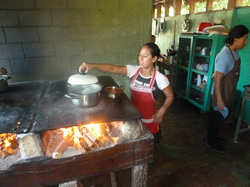
wood fire burned brightly in the stove. The students formed into three groups. They shelled beans, washed tomatoes and stripped small yellow flowers, chapalín, from their stems while others kneeded masa. After an hour everyone paused to eat a snack of crispy tortillas with meat and peppers. A few hours later we had a grand dinner, with tamalitos, chuchitos and also a delicious desert rellonito, in which mashed bananas iare shaped into a tortilla, filled with black beans and chocolate, then fried and sprinkled with sugar. Yum!
After the students left, we sat drinking cervezas while the boys watched TV. Naria recited a poem she had written about the green giant of Petén waking up and throwing off the hands which seek to destroy her beauty. It was a strong poem. She read it with pride and powerful gestures.
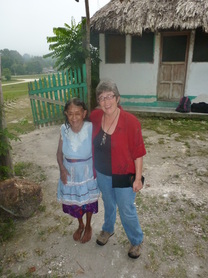
thought I should stay another day. I was still undecided,
stubbornly resisting changing my plans. I wandered to the back of the restaurant where Miranda and Nelly were washing dishes, Miranda’s silent son, clinging to one of her legs. “ How many children do you have? “ Miranda asked.
“I don’t have any children. Just a few books,” I said.
“You don’t have children??” Miranda repeated, as shocked as if I’d said I was transgender. Nelly’s jaw actually dropped in disbelief.
“You have no children?” Nellie said, loudly, pointing at me. I nodded again. “I see, I see,” she clucked to herself. “So you can just take a backpack and go wherever you want.” I didn’t know whether she thought this was good or bad.
“You should stay another day“ Miranada said as I was about to wander back to the cerveza.
“I’ll come back again,” I promised.
“Well you’re already here, now,” Nelly said. It was hard to argue with that. Plus the food was incredible and the hotel was really very comfortable, almost home now. I rushed back to my room to find my flashlight while the generator was still running.
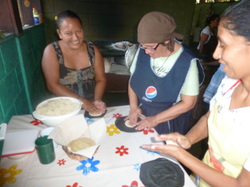
in my group chopped onions and radishes. When I finished I helped stripped leaves from the stalk of yerba buena. Our assignment was a
traditional salad, chojín.. Another group was making pepión, a complex sauce reminiscent of molé , and another hilachas, with it’s tomato based sauce.
When we had a question, which was usually about how fine to chop
something, we called to Maria Teresa. About 10:00 we had a snack of yesterday’s chuchitos, served cold in slices with a delectable tomato sauce and a bit of cheese fluttered over the top.
A mere three hours later it was lunch time and we ate three main courses!. Although I was ready for a nap at this point, we got right up and cooked some more.
We made empanadas and a dish with squash and cheese. I too had my turn at deep frying. That was a breeze compared to making tortillas. While in many parts of Guatemala tortillas are made by patting them with both hands, in Uaxactún the masa is put on a table and shaped with both hands while rotating the dough. After about 12 tries and with considerable coaching from the other women, I was able to make a tortilla the right shape and size. But laying it flat on the hot metal shelf over the fire was another trick and several of my tortillas disintegrated at this point. Ultimately I managed 2 round reasonable tortillas while the women around me made about twenty each. They were very kind to me, but I could imagine them thinking, “She doesn’t have children and she can’t make tortillas! Whatever does she do with her time?”
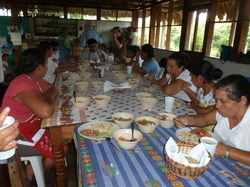
In 6 hours, I had consumed nearly six plates of food and so had everyone
else. So I gladly agreed to a walk around Uaxuctún with Maria Teresa and several other organizers for community based tourism. In
addition to revisiting the ruins, we visited two of the community’s sustainable
enterprises: the cultivation of ornamental palms which are then shipped around
the world and a carpentry project using certified lumber from the jungle.
When we got back, Naría asked what I wanted for dinner! When I said I couldn’t possibly eat more, Naría passed me a notebook and said “Then here, write something about Uaxactún.” And so I wrote a poem too, about the house of time and the heart of the house in Uaxactún. Although my Spanish is not really good enough for poetry yet, everyone clapped.
As befits the home of Mayan astronomy, the night was clear and liberally speckled with stars. Naría, Maria Teresa
and I went out to the grass in front of the hotel and lay on our backs looking up at the sky. Five or six other women from the town joined us. From a Pentacostal church, we could hear people singing loudly and off-key in “tongues.” The warrior
Orion was turned on his side and the seven Pliedes formed a portal in the sky. Venus, one of the most important planets in Mayan astronomy, shone brightest of all, just below the moon.
V. Afterwards
I did leave the next day and Naría came too, saying she had errands in town. On the bus ride, I asked if she got her
hair cut in Santa Elena (next to Flores) as I was getting shaggy. Yes, she said, she had a good salon and she would show me.
I thought she would give me directions when we got close to the city. Instead, she called the bus driver to a halt and we disembarked, she taking my hand as we crossed the street, entering a salon with enormous posters of hip young models.
She spoke rapidly to the large man wearing an earring. He pointed to the chair and immediately began shaving the back of my head and then cutting the rest so quickly it was like being in a hair tornado. Then he pointed to the woman who would
shampoo and finish up. Naría sat waiting and declared the results, “bonita.” I agreed it looked great. I paid $3.50, we hugged and Naría was off.
Several days later I met Maria Teresa, the cooking teacher, in Florés. We went out for a drink and I asked her if she had ever cooked on a wood fire before, as she was from Guatemala City. “No,” she said, “and I had to learn to make tortillas too. And also, the day after you left, the recipes called for chicken. So three women in the class brought live chickens and proceeded to kill and pluck them before class began! I had only bought them in the market before!”
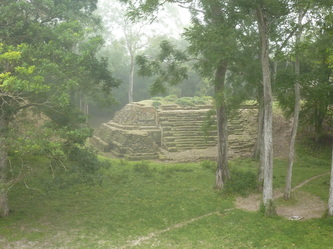
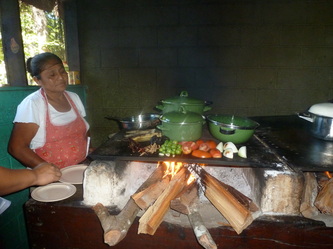
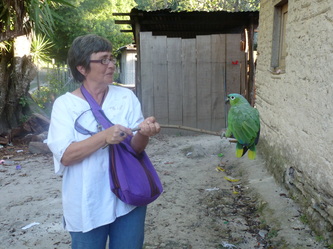
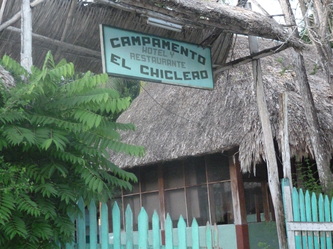
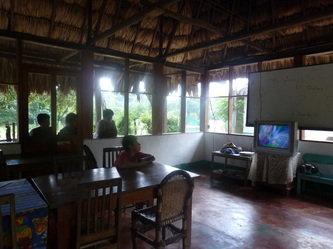
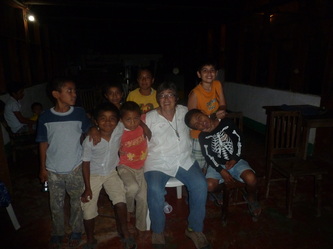
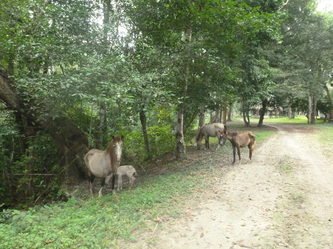
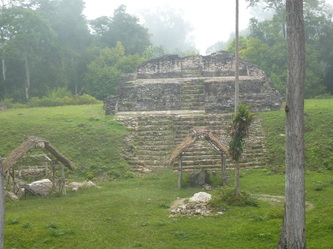
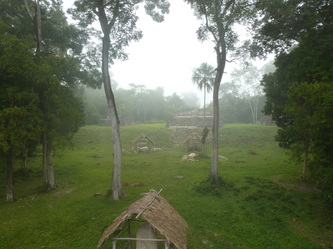
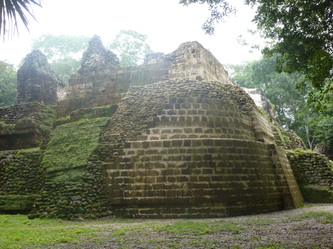
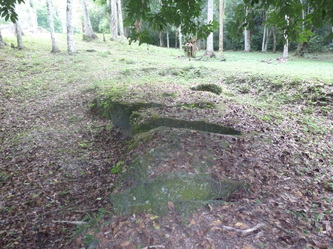
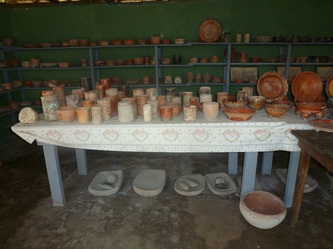
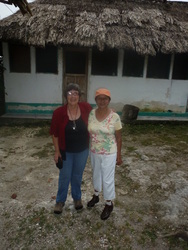
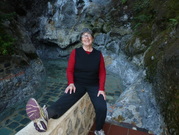
 RSS Feed
RSS Feed
